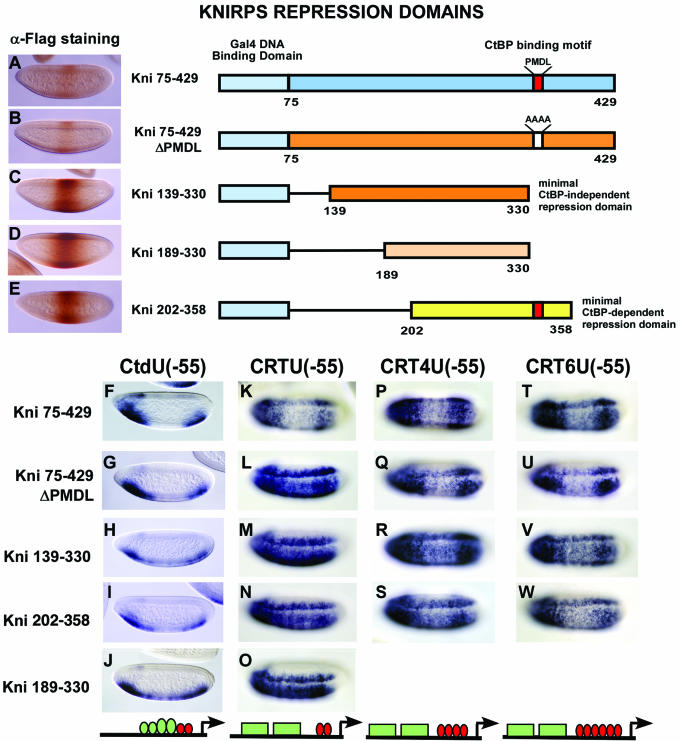FIG. 5.
Combined CtBP-dependent and CtBP-independent activities of Knirps mediate enhanced repression. (Top) Diagrams of the Gal4-Knirps repression domains analyzed are shown; the different regions that contain CtBP-independent (orange) and CtBP-dependent (yellow) repression activities or both (blue) are highlighted. Gal4-Kni189-330 (light orange) contains a portion of the CtBP-independent domain used as a negative control. The red box indicates the position of Knirps CtBP-binding motif (PMDL motif), which is mutated in Kni75-429ΔPMDL (PMDL→AAAA) and is shown as a white box. All constructs contain a double FLAG epitope tag at their C terminus. (A to E) Embryos expressing each of the Gal4-Knirps proteins indicated on their right were assayed for levels of protein by immunostaining with M2 anti-FLAG antibody. (F to W) Repression activities of Gal4-Knirps repressor genes containing proximal or distal activator sites. The full-length repression domain of Knirps as well as the individual repression domains were effective at mediating repression of the CtdU(−55) lacZ reporter containing proximal Twist and Dorsal activator sites (F to I). The full-length Knirps repression domain was effective, but the individual CtBP-dependent and CtBP-independent domains were ineffective, at repressing the CRTU(−55) reporter containing two UAS binding sites and distal Twist and Dorsal activator sites (K to N). Increasing the number of repressor binding sites from 2 to 4 or 6 within the CRTU lacZ reporter enhances repression by the weak CtBP-dependent and -independent domains (P to W). A portion of Knirps used as a negative control exhibited occasional weak activity on the CtdU(−55) reporter but not on CRTU(−55) (J and O). Activators are represented as green ovals and boxes, and repressors are represented as red ovals.

